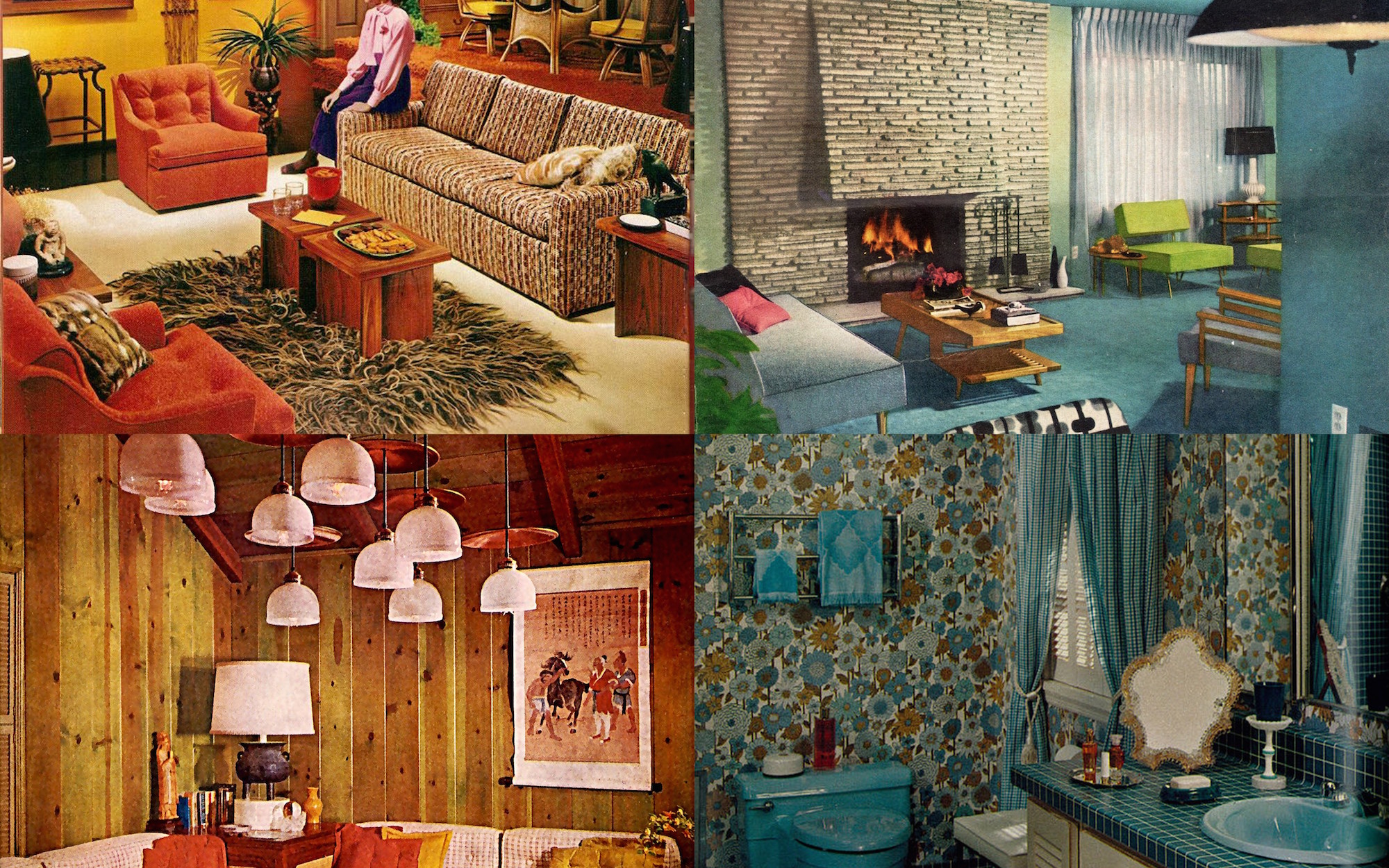Iconic Design Elements: 1960s House Interior

The 1960s marked a departure from the traditional design sensibilities of the past, embracing a bold and experimental approach that celebrated geometric shapes, vibrant colors, and contrasting textures. The influence of mid-century modernism was evident in the clean lines, organic forms, and emphasis on functionality that characterized 1960s house interiors.
If you’re looking to add a touch of the exotic to your 1960s house interior, consider incorporating elements of safari decor. Animal prints, natural materials like leather and wood, and ethnic patterns can all help to create a sense of adventure and escape.
With a few carefully chosen pieces, you can easily transform your home into a stylish and inviting space that evokes the spirit of the African savanna.
Geometric Shapes and Patterns
Geometric shapes played a significant role in defining the aesthetic of 1960s interiors. Circles, squares, and triangles were incorporated into furniture, textiles, and architectural elements, creating a sense of order and symmetry. Bold geometric patterns, such as stripes, zigzags, and chevrons, added visual interest and a touch of whimsy to the spaces.
Step back into the groovy era of the 1960s, where bold patterns and vibrant colors reigned supreme. Interiors were a kaleidoscope of geometric shapes, shaggy rugs, and the occasional splash of skull decor. These edgy accents added a touch of macabre to the otherwise playful and optimistic aesthetic, creating a unique and unforgettable atmosphere that defined the era’s eclectic spirit.
Bold Colors and Contrasting Textures
The color palette of 1960s house interiors was equally bold and vibrant. Primary colors, such as red, blue, and yellow, were often paired with neutral tones, such as white and black, to create a striking contrast. Contrasting textures, such as smooth leather and rough-hewn wood, added depth and interest to the spaces.
Influence of Mid-Century Modernism
The mid-century modern movement had a profound influence on the overall aesthetic of 1960s house interiors. This style emphasized functionality, simplicity, and the use of natural materials. Clean lines, open floor plans, and large windows were common features of mid-century modern homes, creating a sense of spaciousness and light.
Furniture and Decor

The 1960s saw a departure from the traditional furniture and decor styles of the past. Furniture became more modern, with clean lines, curved edges, and tapered legs. Upholstery was often plush and colorful, and modular and multifunctional pieces were popular. Organic materials and natural elements, such as wood, stone, and plants, were also widely used in decor.
Key Characteristics of 1960s Furniture
- Curved lines and organic shapes
- Tapered legs
- Plush upholstery
- Modular and multifunctional pieces
- Use of organic materials and natural elements
Modular and Multifunctional Pieces, 1960s house interior
Modular furniture was popular in the 1960s because it was versatile and could be easily reconfigured to fit different spaces. Multifunctional pieces, such as sofas that could also be used as beds, were also popular because they saved space and money.
Organic Materials and Natural Elements
Organic materials and natural elements were widely used in 1960s decor because they created a warm and inviting atmosphere. Wood was a popular choice for furniture and flooring, and stone was often used for countertops and fireplaces. Plants were also popular, and they added a touch of life and color to any space.
Architectural Features

The 1960s marked a departure from traditional architectural styles, with an emphasis on open floor plans, expansive windows, and the incorporation of natural light.
Open floor plans, characterized by minimal walls and partitions, allowed for a seamless flow of space and created a sense of spaciousness. This design approach promoted a more fluid and interactive living environment.
Expansive Windows
Large windows, often floor-to-ceiling, were a defining feature of 1960s houses. These windows not only provided ample natural light but also offered panoramic views of the surrounding landscape. The use of glass walls and sliding doors further blurred the boundaries between indoor and outdoor spaces, creating a sense of connection with nature.
Skylights and Clerestory Windows
Skylights and clerestory windows were employed to maximize natural light in interior spaces. Skylights, installed on the roof, allowed for direct overhead lighting, while clerestory windows, positioned high on walls, provided indirect light without compromising privacy.
Unique Architectural Elements
Some 1960s houses incorporated unique architectural elements that reflected the era’s experimental spirit. Sunken living rooms, for instance, provided a cozy and intimate space within the larger open floor plan. Spiral staircases, often crafted from metal or wood, added a touch of sculptural elegance to interior spaces.